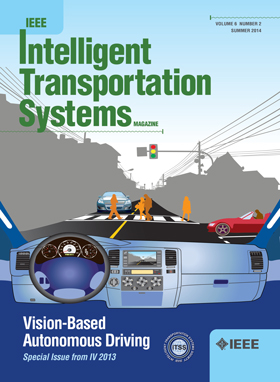A Systematic Survey of Digital Twin Applications: Transferring Knowledge From Automotive and Aviation to Maritime Industry
IF 7.9
1区 工程技术
Q1 ENGINEERING, CIVIL
IEEE Transactions on Intelligent Transportation Systems
Pub Date : 2025-02-24
DOI:10.1109/TITS.2025.3535593
引用次数: 0
Abstract
Digital twin (DT) technology, which creates virtual representations of physical systems to optimize their life-cycle, has drawn significant attention across various industries. The automotive and aviation industries have been pioneers in adopting DTs for enhanced efficiency, predictive maintenance, and real-time decision-making. However, the maritime industry, crucial to global trade and logistics, has lagged in DT implementation. This paper aims to bridge this gap by systematically surveying DT applications in the automotive and aviation industries and exploring how this knowledge can be transferred to the maritime industry. By analyzing existing literature, identifying key trends, and summarizing best practices, a comprehensive roadmap is provided for maritime industry adoption of DT technology. The surveyed papers are selected systematically following the PRISMA statement and categorized based on characteristics such as single vs. multiple systems, modeling methods (model-driven, data-driven, and hybrid), and life-cycle phases. We introduce DT models using a five-dimensional framework and analyze their characteristics in terms of research object, subsystem application, and modeling method. Additionally, DT applications from a product life-cycle perspective, covering design, manufacturing, operation, and maintenance phases are examined. Knowledge transfer from the automotive and aviation industries to the maritime industry is summarized. In the automotive industry, DTs enhance vehicle efficiency and safety, particularly for autonomous and electric vehicles. Aviation DT research focuses on predictive maintenance, pilot training, and real-time monitoring to improve operational efficiency and safety. The maritime industry faces data challenges and operational complexity but has significant potential for DTs to enhance ship performance, safety, and predictive maintenance.数字孪生应用的系统调查:将知识从汽车和航空转移到海事工业
数字孪生(DT)技术创建物理系统的虚拟表示以优化其生命周期,已经引起了各个行业的广泛关注。汽车和航空工业一直是采用DTs来提高效率、预测性维护和实时决策的先驱。然而,对全球贸易和物流至关重要的海运业在实施数字化发展方面落后。本文旨在通过系统地调查DT在汽车和航空工业中的应用,并探索如何将这些知识转移到航运业,来弥合这一差距。通过分析现有文献,确定关键趋势,总结最佳实践,为海运业采用DT技术提供了全面的路线图。被调查的论文是根据PRISMA声明系统地选择的,并根据单系统与多系统、建模方法(模型驱动、数据驱动和混合)和生命周期阶段等特征进行分类。介绍了基于五维框架的DT模型,分析了DT模型在研究对象、子系统应用和建模方法等方面的特点。此外,从产品生命周期的角度,涵盖设计,制造,操作和维护阶段的DT应用程序进行了检查。总结了从汽车和航空工业到海事工业的知识转移。在汽车行业,DTs提高了车辆的效率和安全性,特别是对于自动驾驶和电动汽车。航空DT研究的重点是预测性维护、飞行员培训和实时监控,以提高运营效率和安全性。海运业面临着数据挑战和操作复杂性,但DTs在提高船舶性能、安全性和预测性维护方面具有巨大潜力。
本文章由计算机程序翻译,如有差异,请以英文原文为准。
求助全文
约1分钟内获得全文
求助全文
来源期刊

IEEE Transactions on Intelligent Transportation Systems
工程技术-工程:电子与电气
CiteScore
14.80
自引率
12.90%
发文量
1872
审稿时长
7.5 months
期刊介绍:
The theoretical, experimental and operational aspects of electrical and electronics engineering and information technologies as applied to Intelligent Transportation Systems (ITS). Intelligent Transportation Systems are defined as those systems utilizing synergistic technologies and systems engineering concepts to develop and improve transportation systems of all kinds. The scope of this interdisciplinary activity includes the promotion, consolidation and coordination of ITS technical activities among IEEE entities, and providing a focus for cooperative activities, both internally and externally.
 求助内容:
求助内容: 应助结果提醒方式:
应助结果提醒方式:


